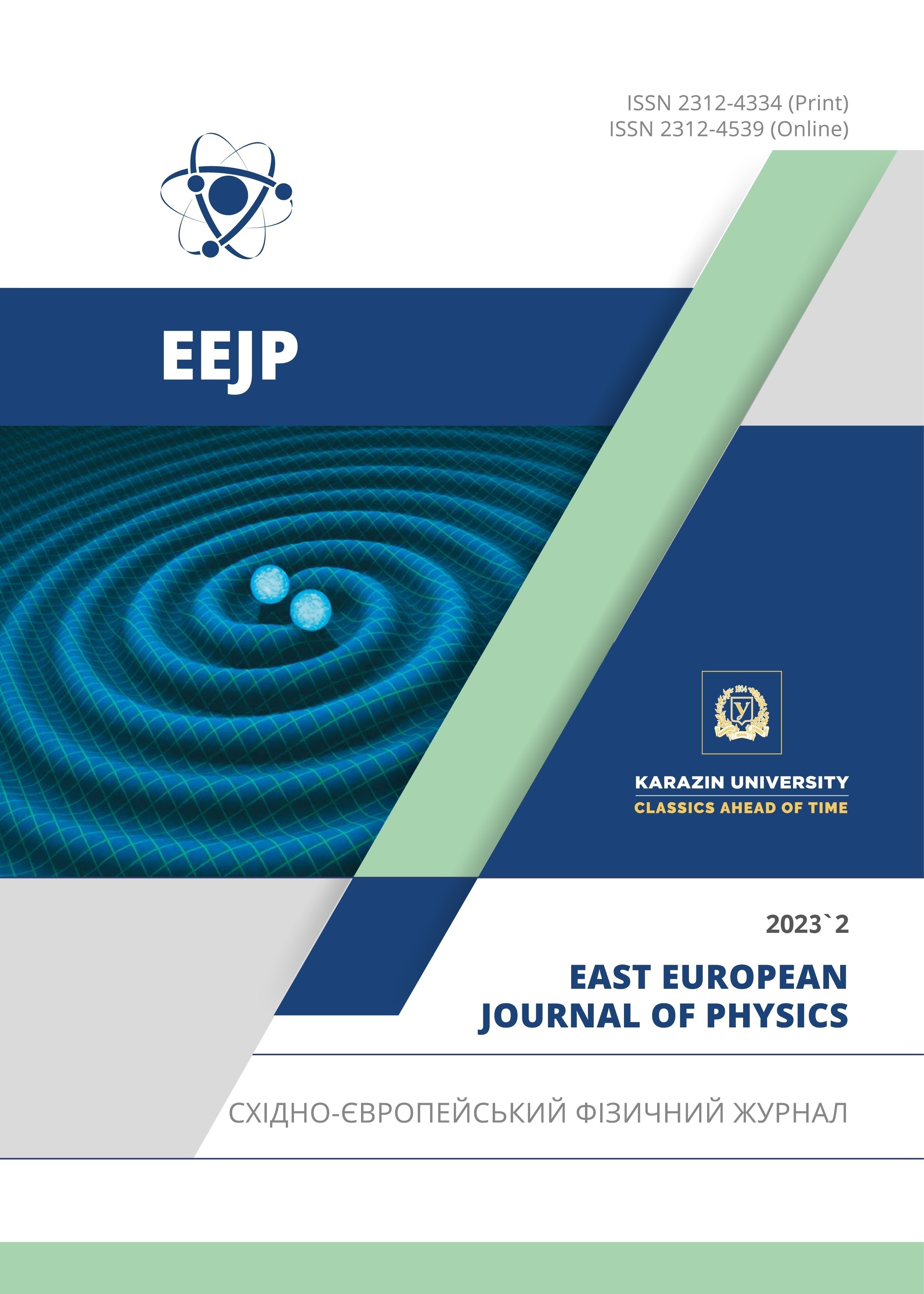A Study of the Weakly Bound Structure of Nuclei Around the Magic Number N=50
Abstract
An investigation of the quadrupole deformation of Kr, Sr, Zr, and Mo isotopes has been conducted using the HFB method and SLy4 Skyrme parameterization. The primary role of occupancy of single particle state 2d5/2 in the existence of the weakly bound structure around N=50 is probed. Shell gaps are performed using a few other calculations for the doubly magic number 100Sn using different Skyrme parameterizations. We explore the interplays among neutron pairing strength and neutron density profile in two dimensions, along with the deformations of 100Sn.
Downloads
References
M.V. Stoistsov, J. Dobaczewski, W. Nazarewicz, and P. Ring, Comp. Phys. Comm. 167 43 (2005). https://doi.org/10.1016/j.cpc.2005.01.001
B.A. Brown, and W.D.M. Rae, Nucl. Data Sheets, 120, 115 (2014). https://doi.org/10.1016/j.nds.2014.07.022
P.G. Reinhard, B. Schuetrumpf, and J.A. Maruhn, Comp. Phys. Comm. 258, 107603 (2021). https://doi.org/10.1016/j.cpc.2020.107603
P. Ring, and P. Schuck, The Nuclear Many Body Problem, (Springer, Berlin-Heidelberg, 1980).
A.A. Alzubadi, Indian J. Phys. 89, 619 (2015). https://doi.org/10.1007/s12648-014-0614-3
A.I. Goodman, Adv. Nucl. Phys. 11, 263 (1975).
Fl. Stancu, D.M. Brink, and H. Flocard, Phys. Lett. B, 68, 108 (1977). https://doi.org/10.1016/0370-2693(77)90178-2
D. Vautherin, and D.M. Brink, Phys. Rev. C, 5, 626 (1972). https://doi.org/10.1103/PhysRevC.5.626
P.J. Brussaard, and P.W.M. Glademans, Shell Model Application in Nuclear Spectroscopy, (North-Holland Publishing Company, Amsterdam, 1977).
G. Colò, H. Sagawa, S. Fracasso, and P.F. Bortignon, Phys. Lett. B, 646, 227 (2007). https://doi.org/10.1016/j.physletb.2007.01.033
M. Beiner, H. Flocard, N. Van Giai, and P. Quentin, Nucl. Phys. A, 238, 29 (1975). https://doi.org/10.1016/0375-9474(75)90338-3
P. Klupfel, P.-G. Reinhard, T.J. Bürvenich, and J.A. Maruhnet, Phys. Rev. C, 79, 034310 (2009). https://doi.org/10.1103/PhysRevC.79.034310
A.A. Alzubadi, and R.S. Obaid, Indian J. Phys. 93, 75 (2019). https://doi.org/10.1007/s12648-018-1269-2
V.I. Isakov, Phys. Part. Nuclei, 38, 269 (2007). https://doi.org/10.1134/S1063779607020062
B.A. Brown, W.A. Richter, and R. Lindsay, Phys. Lett. B, 483, 49 (2000). https://doi.org/10.1016/S0370-2693(00)00589-X
Copyright (c) 2023 R.S. Obaid, Ali A. Alzubadi

This work is licensed under a Creative Commons Attribution 4.0 International License.
Authors who publish with this journal agree to the following terms:
- Authors retain copyright and grant the journal right of first publication with the work simultaneously licensed under a Creative Commons Attribution License that allows others to share the work with an acknowledgment of the work's authorship and initial publication in this journal.
- Authors are able to enter into separate, additional contractual arrangements for the non-exclusive distribution of the journal's published version of the work (e.g., post it to an institutional repository or publish it in a book), with an acknowledgment of its initial publication in this journal.
- Authors are permitted and encouraged to post their work online (e.g., in institutional repositories or on their website) prior to and during the submission process, as it can lead to productive exchanges, as well as earlier and greater citation of published work (See The Effect of Open Access).








